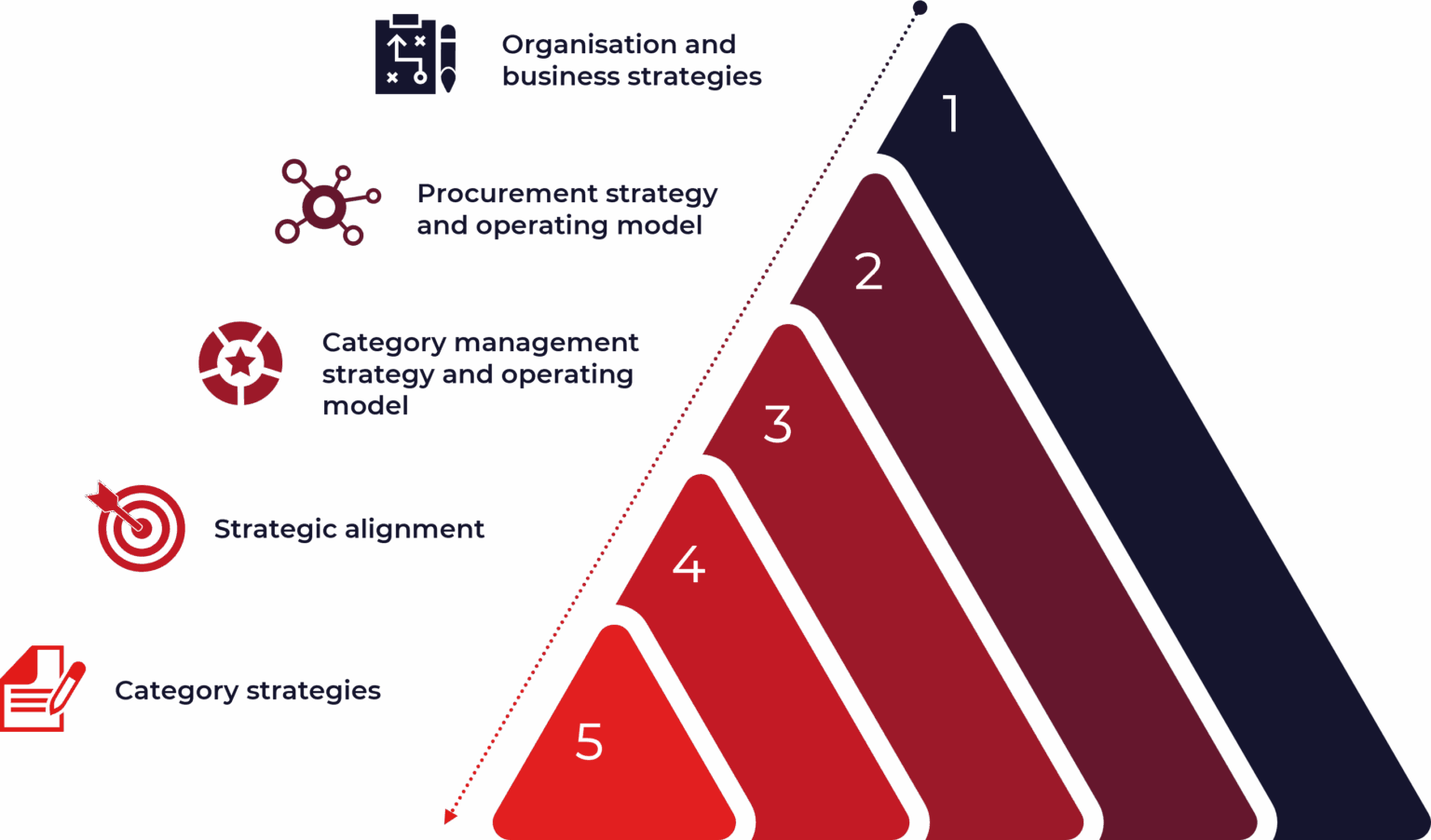
Blog
Understanding the Procurement Strategy Hierarchy to design better operating model structures
By Mark Webb |
What is a Procurement Strategy Hierarchy?
A hierarchy of strategies ensures a clear alignment between the organisation’s overarching vision and goals and the procurement team’s strategy, as well as the agreed-upon actions taken at each level. This article outlines how a hierarchy of strategies helps create clarity and alignment across the organisation.
The Procurement Strategy Hierarchy describes a cascading model of strategies. Each underlying strategy layer is derived from and aligned with the superior strategy layer to ensure a clear connection between an organisational strategy and the actions of each individual within the organisation. Starting from the organisational and business strategy, the procurement strategy needs to be designed to support the business objectives.
The Category Management strategy and operating model need to translate those objectives into processes and mechanisms to ensure alignment across categories. Ultimately, category strategies need to be created based on the aligned business requirements. This model can be further developed into supplier management and sourcing and negotiation strategies.

Using the Procurement Operating Model to create a strategy hierarchy
The Global Category Management Report and its six dimensions provide a checklist of questions to shape a strategy and operating model for Category Management. This fits into the middle tier of the strategy hierarchy and clarifies for the procurement team and stakeholders how category management will be adopted. The procurement leadership team collectively makes these decisions.
Looking upwards in the hierarchy, the category management strategy and operating model are a subset of the wider procurement strategy and operating model, which is itself shaped by the overall organisational and business strategies.
Looking downwards, the spend influenced by the procurement team is divided into manageable categories, often reflecting supply markets or internal structures.
Strategic Alignment in Procurement
These are the category groups that senior managers control through an approach we call strategic alignment. Strategic alignment is a distinct activity above category and supplier management. It is used during the business planning cycle to identify and prioritise procurement activities with senior business stakeholders and consider linkages and interdependencies between categories and suppliers in the category group. The outcome is an agreed-upon pipeline of category and supplier projects to work on. Individual category strategies sit beneath strategic alignment.
Benefits of a clearly designed Procurement Strategy Hierarchy
Ensuring alignment between the overarching vision and goals of an organization and translating them into the procurement team’s strategy, ultimately breaking them down into category, supplier, and negotiation strategies, creates cohesion across the actions taken at each level by every team member. This clarity helps everyone within the organization understand how their work contributes to overall procurement and business objectives.
When this hierarchy is well designed and communicated, category strategies are co-created with stakeholders, fully supported, and implemented at speed. Responsibilities at each level are clear, resulting in improved value delivery, risk management, and agility.
Assessing Your Category Management Maturity
We offer the Category Management Maturity Assessment to assess the alignment of your category management practices and the performance of the individual steps. Contact us to discuss the ingredients of a strong operating model and how to build one.

About Mark Webb
Managing Director
30+ years procurement experience in line management
and consulting roles.
Previous employment: Price Waterhouse, Mobil Oil and QP Group
Education: BSc in Management Science and MSc in Business by Research, Aston University
CIPS: Member




